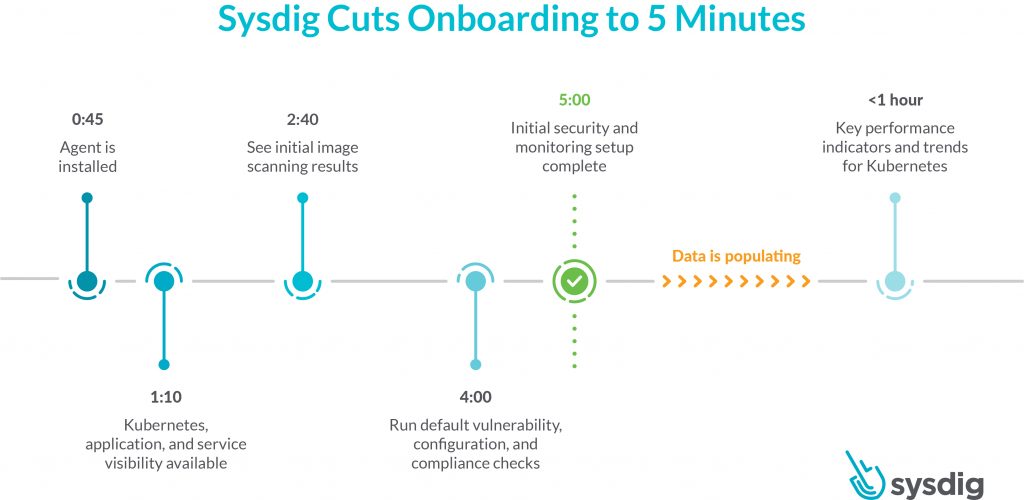Sysdig Streamlines DevOps Kubernetes Platform
Sysdig today announced it has reduced the amount of time to set up the Sysdig Secure DevOps Platform for Kubernetes environments to less than five minutes.
In addition, Sysdig is now making available a Sysdig Essentials pricing tier that packages five core DevSecOps workflows together within a single software-as-a-service (SaaS) offering. Those workflows span image scanning, runtime security, compliance auditing, monitoring and pre-configured dashboards. Sysdig also offers five additional workflows to address advanced troubleshooting, machine learning-based anomaly detection, threat prevention, incident response and forensics, as well as additional compliance controls.
Janet Matsuda, chief marketing officer for Sysdig, says within five minutes a Sysdig agent is installed and dashboards are populated with data that surfaces vulnerabilities, threats and compliance issues. The goal is to reduce the onboarding process by making it easier to adopt the Sysdig Secure DevOps platform, says Matsuda.
Sysdig is making an effort to converge monitoring and container security processes, he notes—in addition to generating automatic alerts and providing detailed health and performance metric, the Sysdig Secure DevOps Platform can also consume Prometheus metrics and supports the PromQL query language. Developed under the auspices of the Cloud Native Computing Foundation (CNCF), the open source Prometheus monitoring platform is now widely employed by developers who have embraced Kubernetes. By making it possible to consume Prometheus metrics alongside other metrics, Matsuda says Sysdig is enabling IT organizations to converge the monitoring of application, infrastructure and security events.
Arguably, that convergence was a nascent trend within Kubernetes environments prior to the economic downturn brought on by the COVID-19 pandemic. Now IT teams that are embracing Kubernetes to run cloud-native applications are under more intense pressure to reduce the total cost of IT. At the same time, more IT teams are relying on SaaS platforms to manage their IT environments now that more IT teams are working remotely to help combat the spread of COVID-19.
It’s not clear to what degree IT and cybersecurity monitoring will converge, especially in large organizations that have separate DevOps and cybersecurity teams. However, the opportunity to enable those teams to share a platform that enables them to discover issues and share insights offers the potential to streamline workflows.
Many organizations are reconsidering their entire approach to IT in the wake of the pandemic. Some are more aggressively building and deploying cloud-native applications, while others have tempered their migration plans. In either case, it’s becoming apparent IT vendors are responding to the current economic crisis by adding more functionality to increase perceived value at a time when many organizations are going to be looking for ways to rationalize toolsets to reduce costs. As that competition continues to heat up, IT teams should benefit. The challenge, of course, is going to be getting approval to acquire new tools and capabilities at a time when many organizations are putting a moratorium on IT spending until they better understand where the economy is headed.



